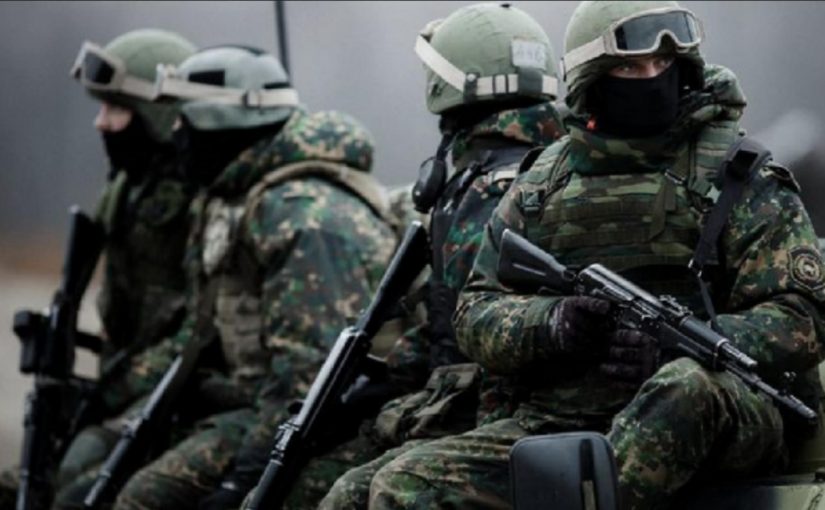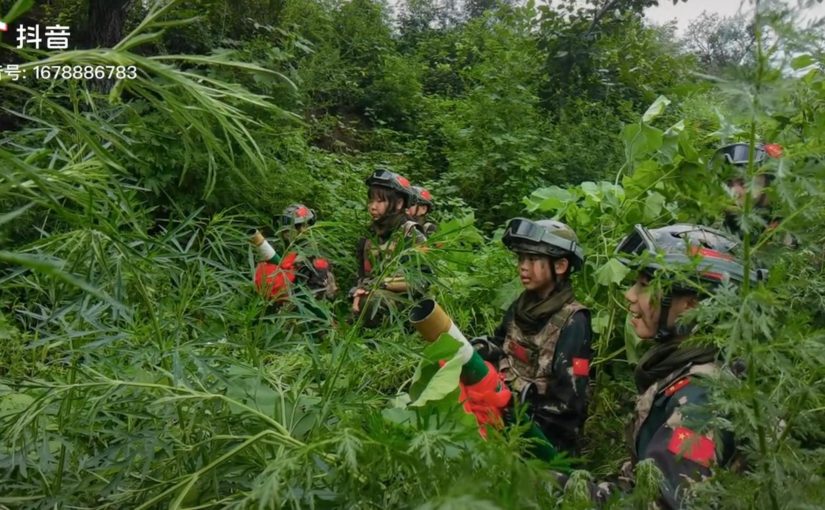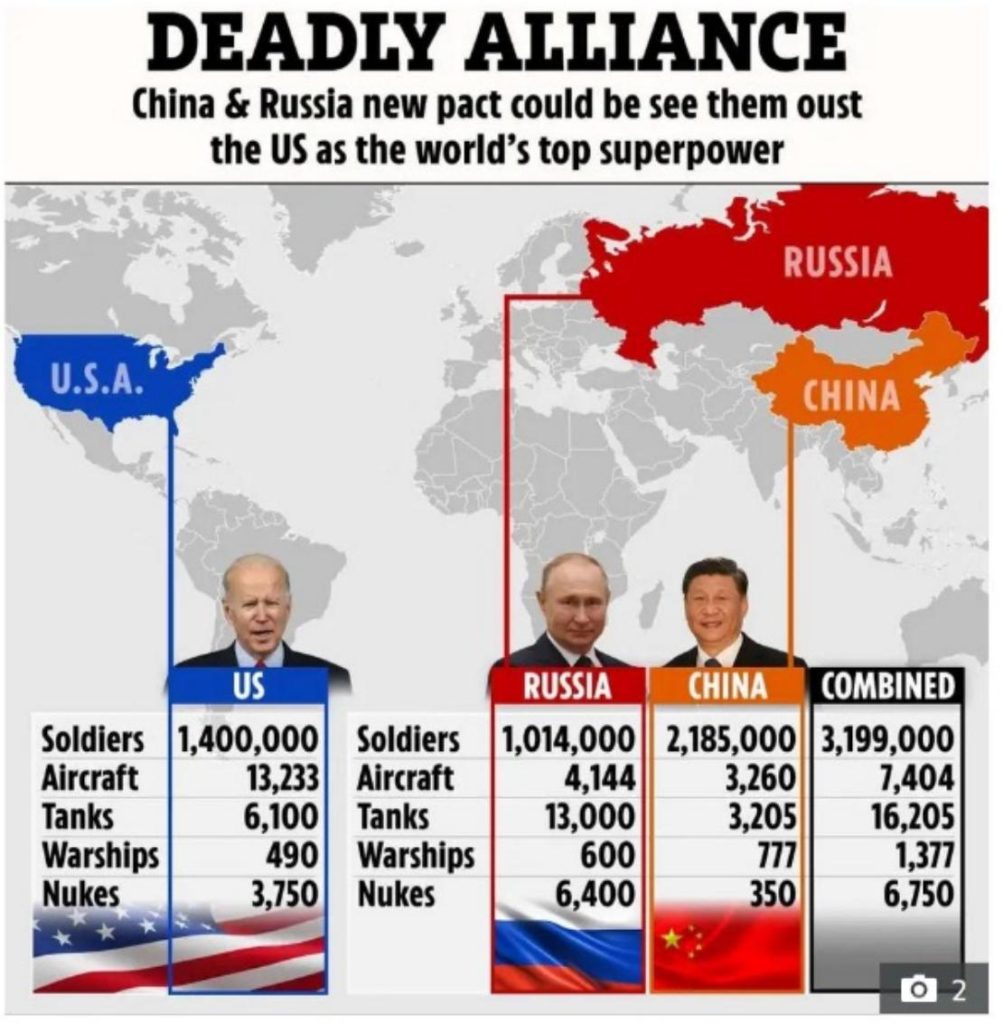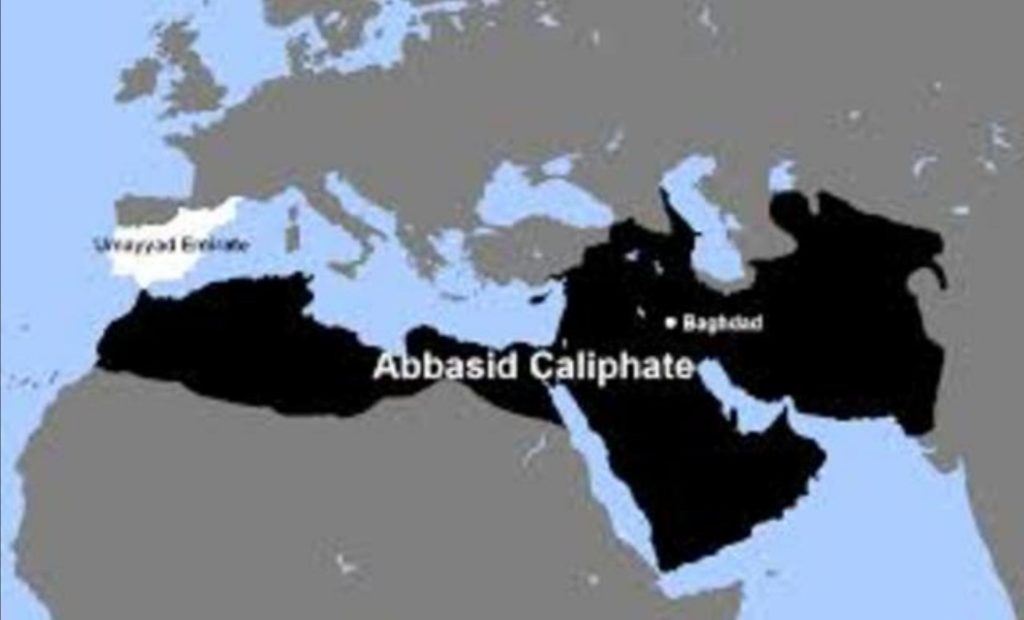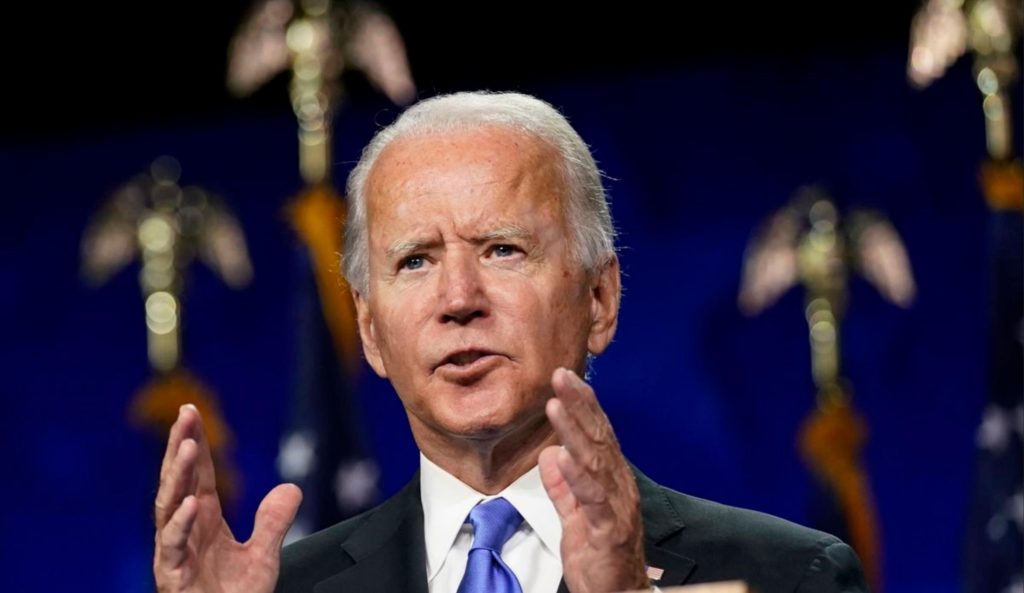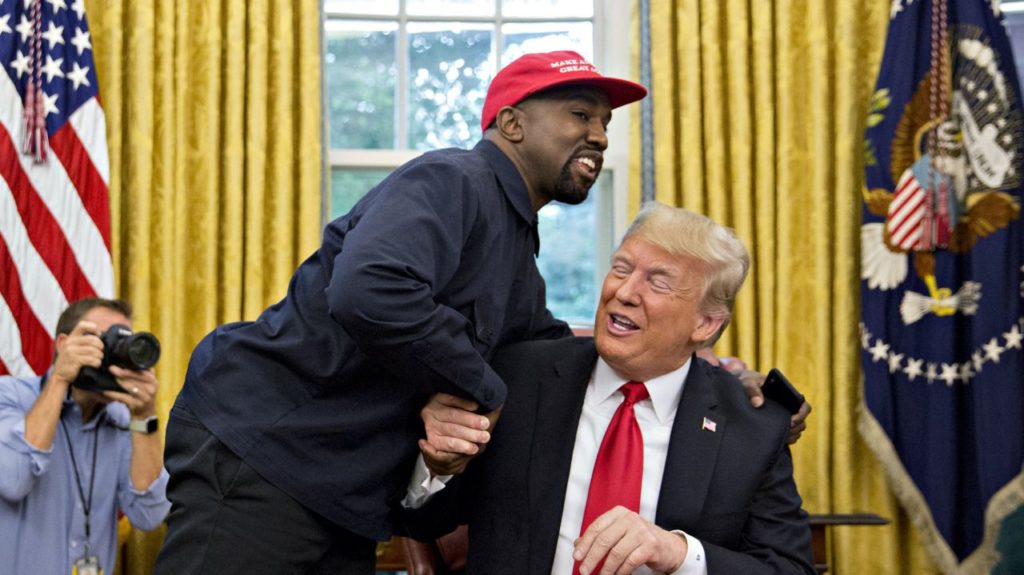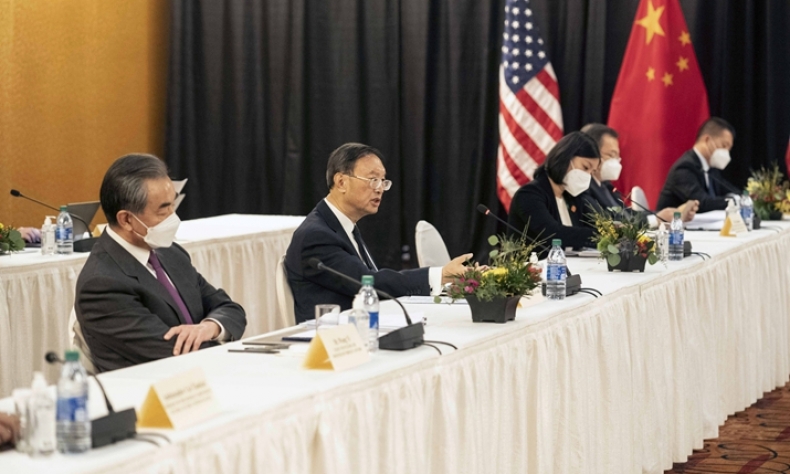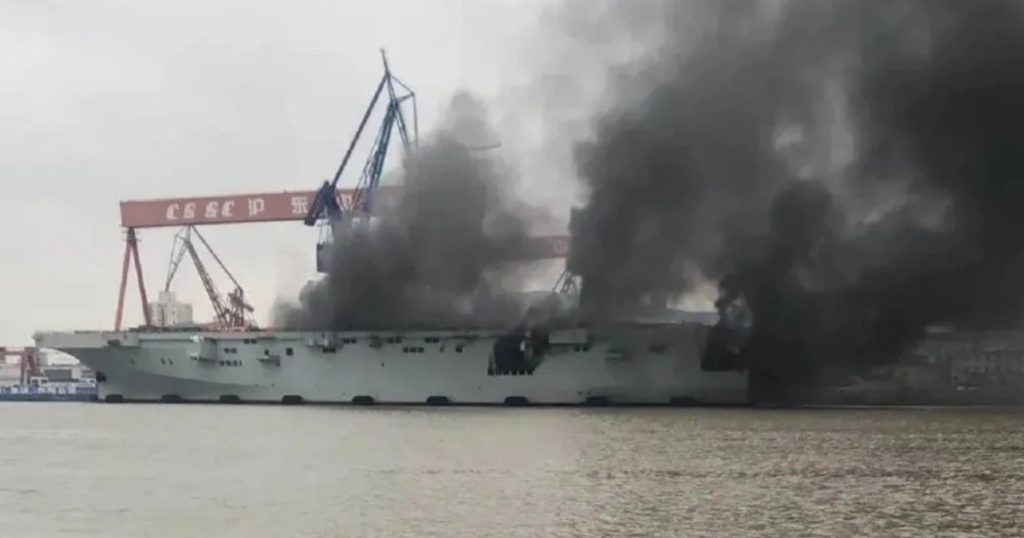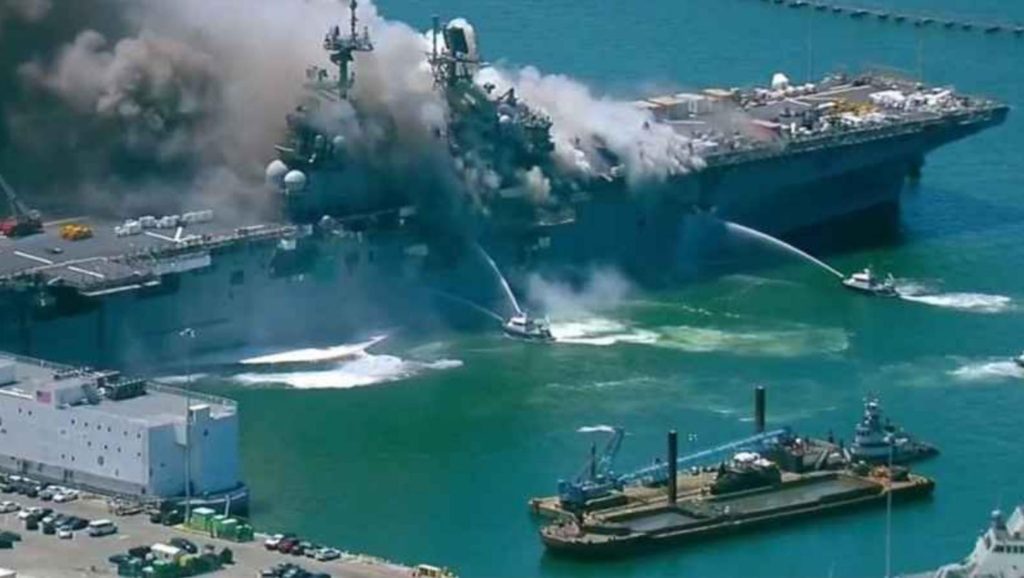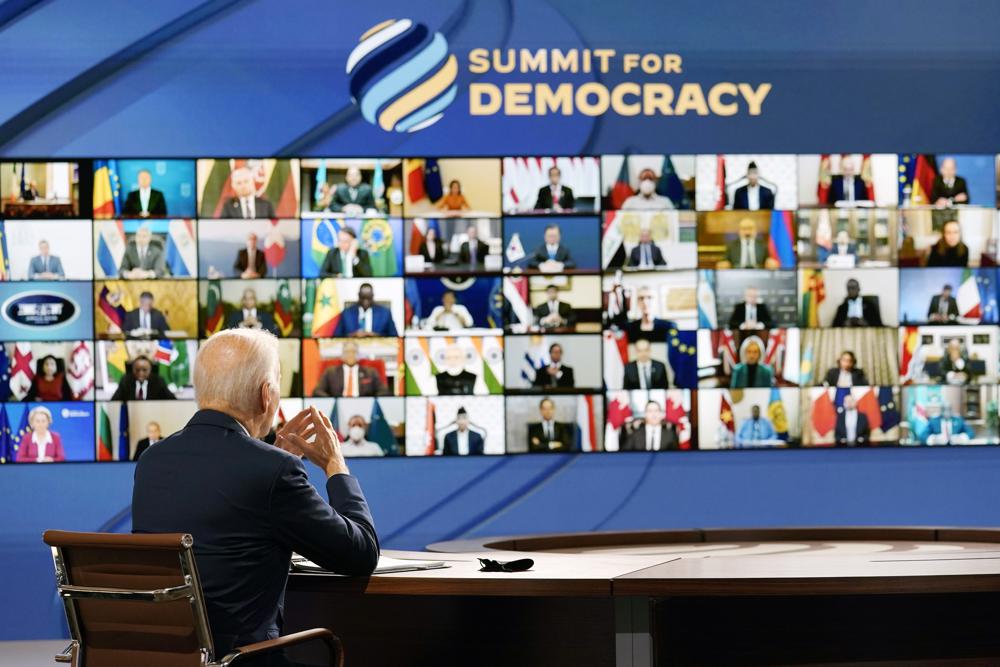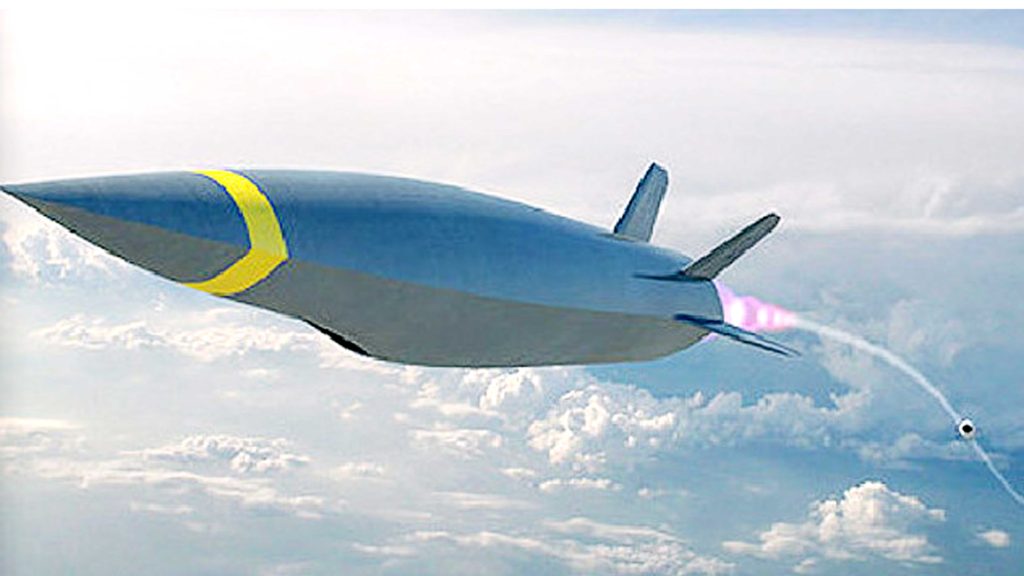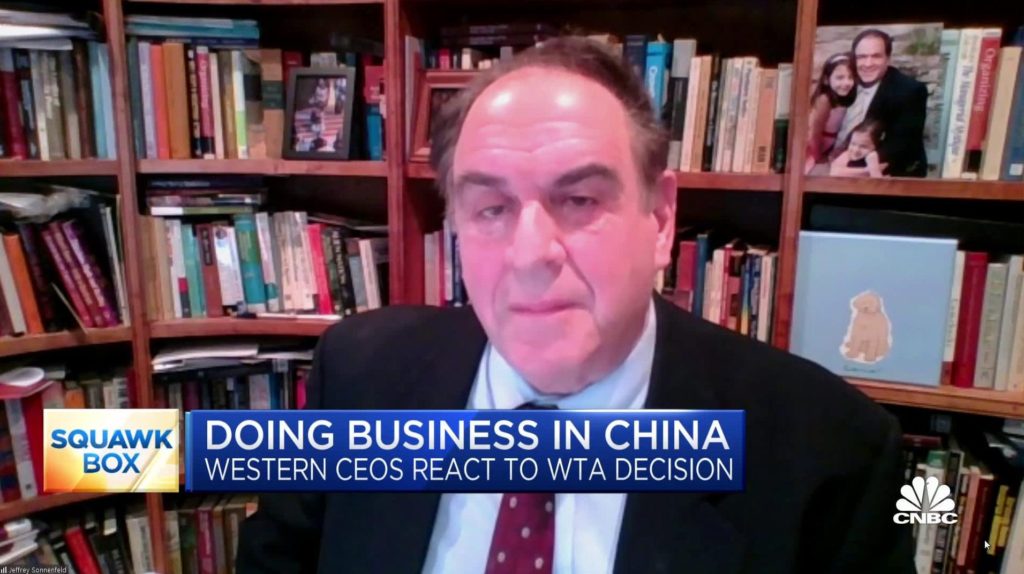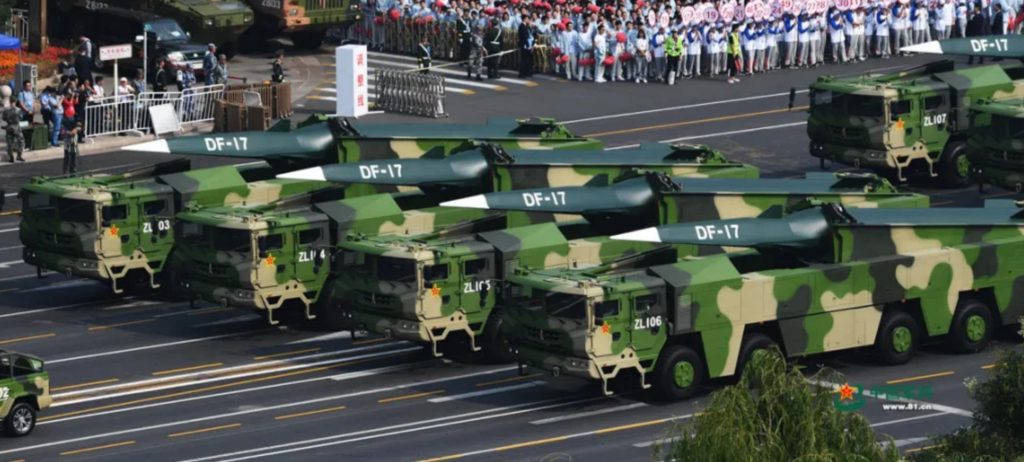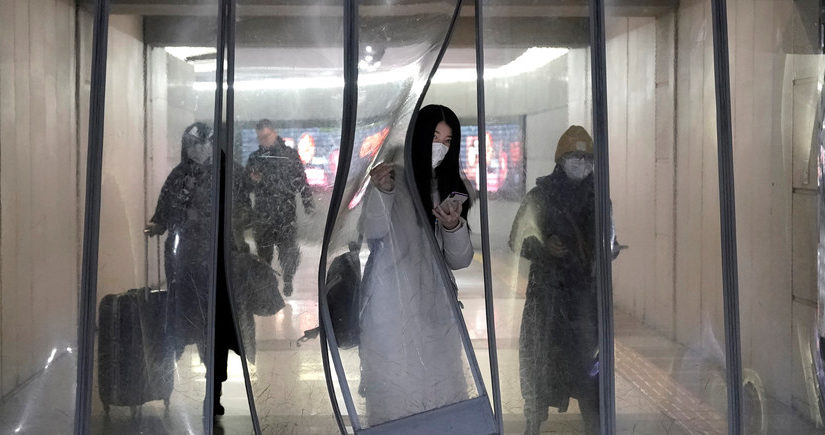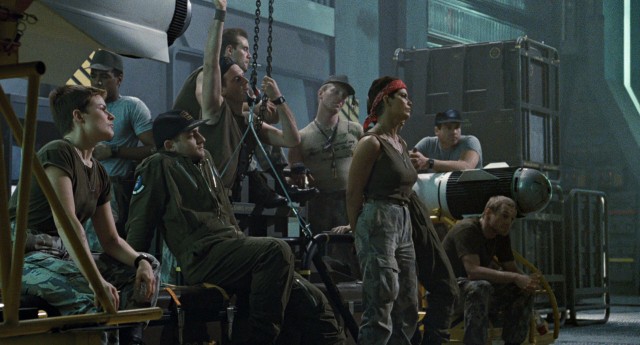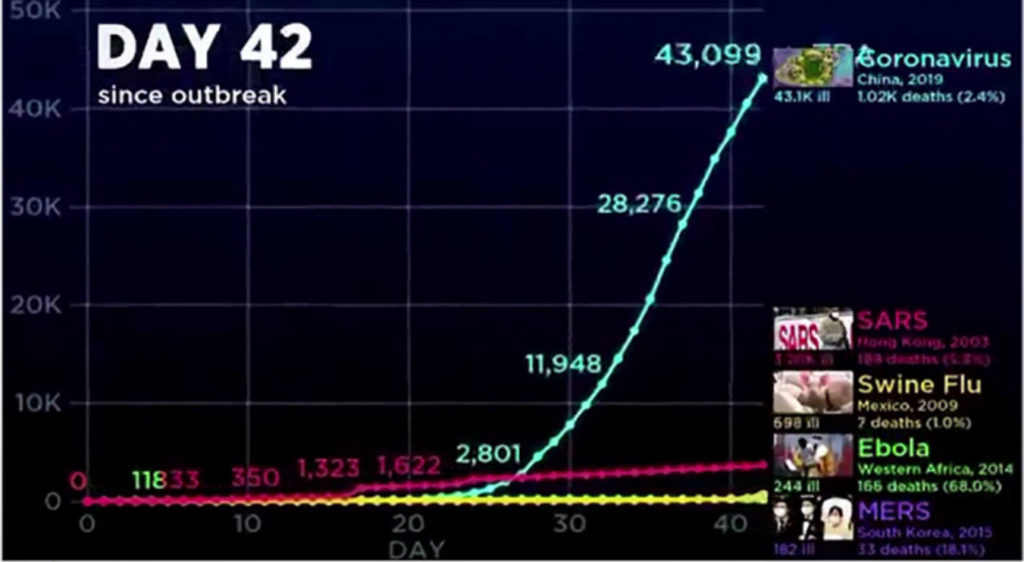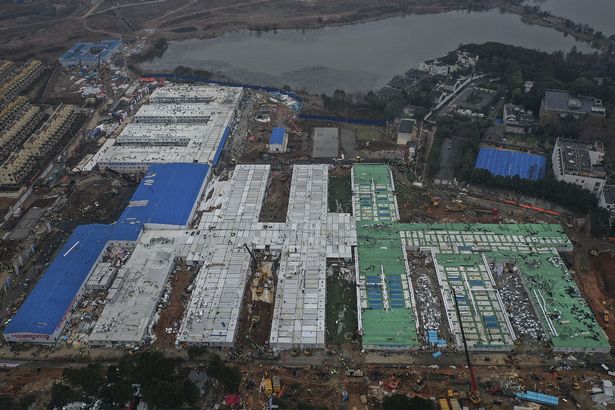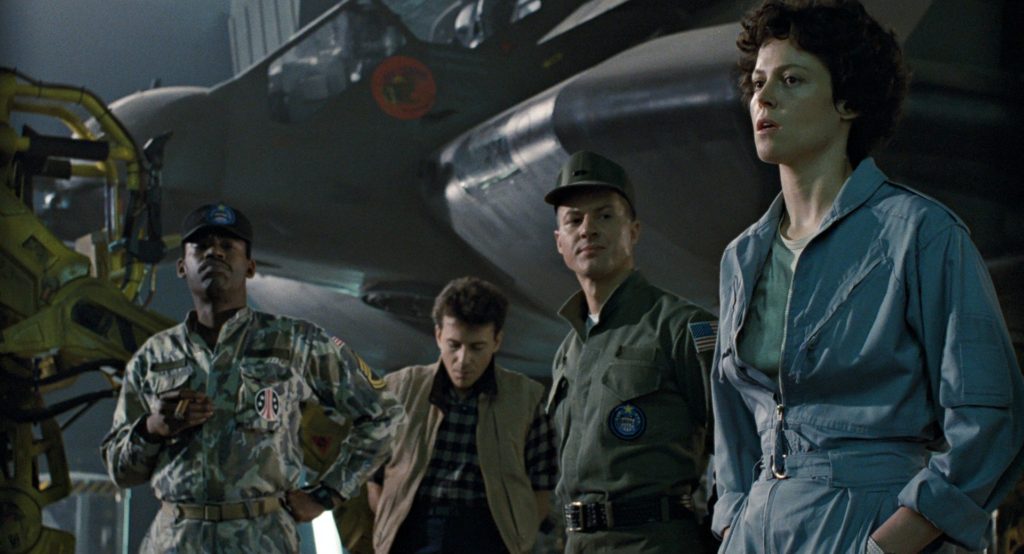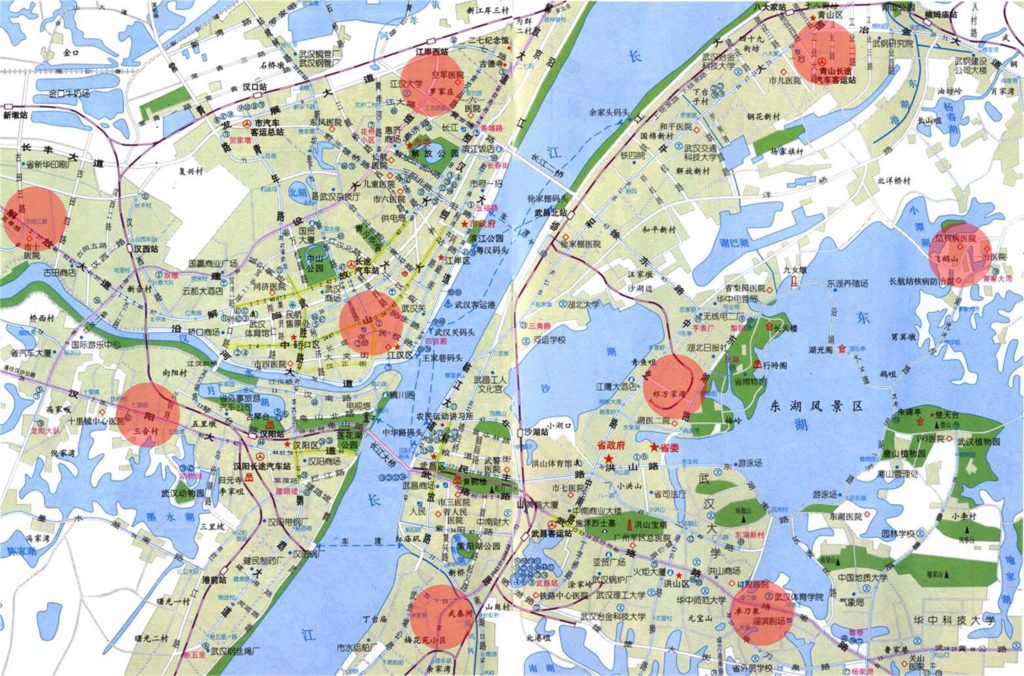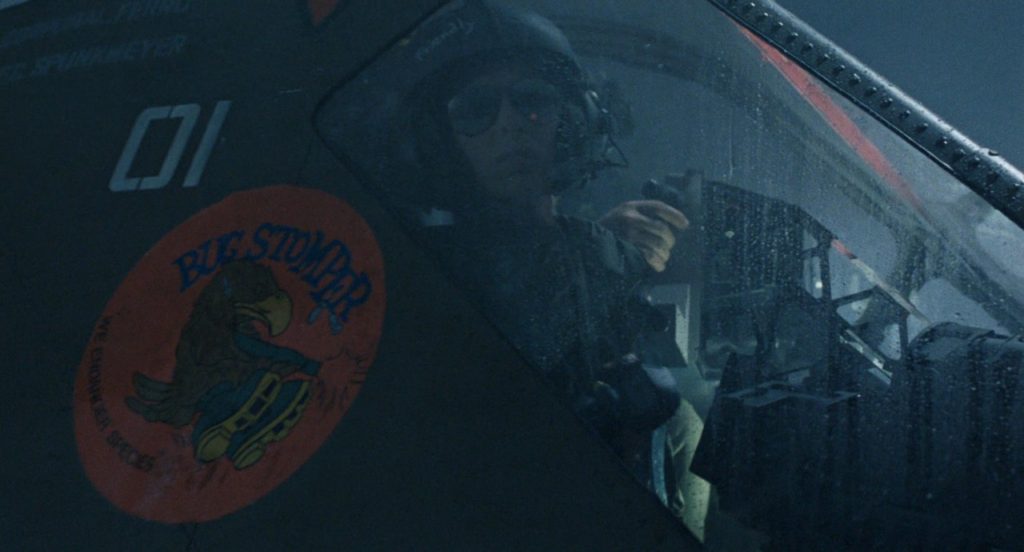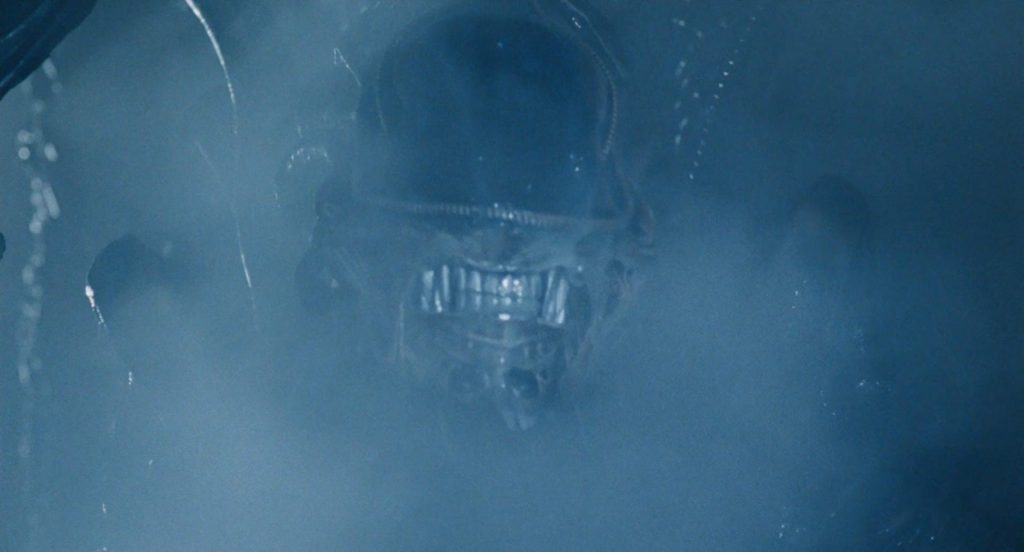With the December 2021 “Ultimatum” by Russia clear in mind, what will be the consequences if President Biden, and the United States does not take this message seriously? What can we expect to happen? Well this article explores this scenario, as all indications are that they are continuing to play “their games”;
Say one thing, do the complete opposite, and narrate bullshit all over the many, many propaganda outlets that they control.
It might play well in the American heartland, but China and Russia are both DEADLY SERIOUS. This time it’s when “the bullet hits the bone”.
The American Response…
On the surface, we see [1] a signed pledge that the Untied States will not target either Russia or China with it’s nuclear missiles.
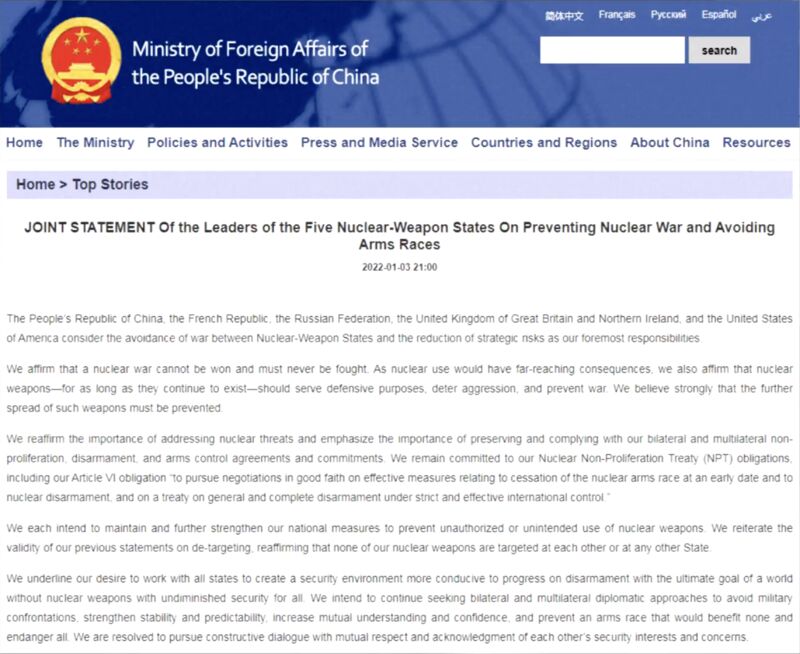
And, you do know, this is meaningless, though it has got a lot of positive press.
Funny how the “news” fails to acknowledge that the United States has a history of repeatedly breaking contracts, agreements and pledges at will. And also that there’s no verification put into place, or changes in American Geo-political military movements or posturings. Just words. Very well promoted words. But meaningless words with no verification systems, or evidence of any further physical actions.
Then we have [2] a color revolution in Kazakhstan. Which is a big nation wedged and jutting into both Russia and China. On The Saker, Andrei suggests that we shouldn’t jump to conclusions that this is a United States backed color revolution. I disagree.
Why do I say that?
Well MoA says it best…
In early 2019 the Pentagon financed think tank RAND published an extensive plan for soft attacks on Russia.
Extending Russia: Competing from Advantageous Ground.
The 350 pages long report recommended certain steps to be taken by the U.S. to contain Russia. As its summary says:
Recognizing that some level of competition with Russia is inevitable, this report seeks to define areas where the United States can do so to its advantage. We examine a range of nonviolent measures that could exploit Russia’s actual vulnerabilities and anxieties as a way of stressing Russia’s military and economy and the regime’s political standing at home and abroad. The steps we examine would not have either defense or deterrence as their prime purpose, although they might contribute to both. Rather, these steps are conceived of as elements in a campaign designed to unbalance the adversary, leading Russia to compete in domains or regions where the United States has a competitive advantage, and causing Russia to overextend itself militarily or economically or causing the regime to lose domestic and/or international prestige and influence.
RAND lists economical, geopolitical, ideological and informational as well as military measures the U.S. should take to weaken Russia.
Since the report came out the first four of the six ‘geopolitical measures’ listed in chapter 4 of the report have been implemented.
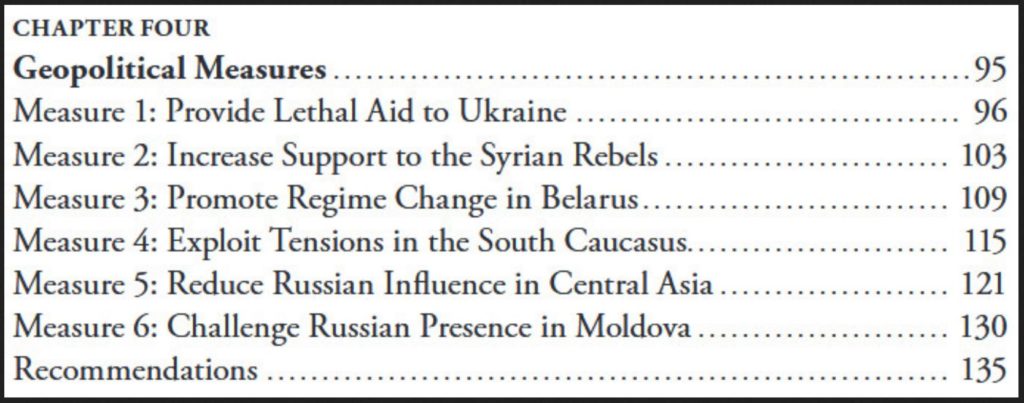
The U.S. is now implementing measure 5 which aims to ‘reduce Russia’s influence in Central Asia’.
Kazakhstan, Russia’s southern neighbor, was part of the Soviet Union. It is a mineral rich, landlocked country three times the size of Texas but with less than 20 million inhabitants. A significant part of its people are Russians and the Russian language is in common use. The country is an important link in the strategic Belt and Road Initiative between China and Europe.
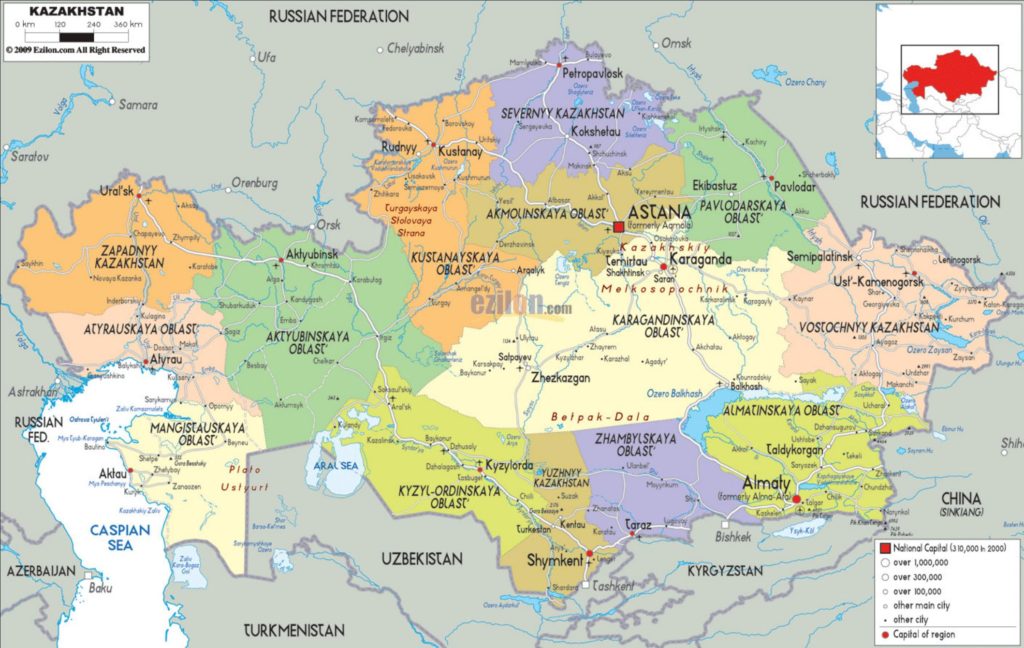
Executive branch chief of state: President Kasym-Zhomart TOKAYEV (since 20 March 2019); note - Nursultan NAZARBAYEV, who was president since 24 April 1990 (and in power since 22 June 1989 under the Soviet period), resigned on 20 March 2019; NAZARBAYEV retained the title and powers of "First President"; TOKAYEV completed NAZARBAYEV's term, which was shortened due to the early election of 9 June 2019, and then continued as president following his election victory
Over the last decade there have been several uprisings (2011, 2016 and 2019) in Kazakhstan. These were mostly caused by uneven distribution of income from its minerals including oil and gas. The oligarchs in the capital of Astana / Nur-Sultan live well while the provinces which produce the minerals, like Mangistauskaya in the south-west, have seen few developments.
Recently the price for liquefied petroleum gas (LPG), used by many cars in Kazakhstan, went up after the government had liberalized the market. This caused another round of country wide protests:
The string of rallies that has torn through Kazakhstan since January 2 began in the western oil town of Zhanaozen, ostensibly triggered by anger over a sudden spike in the price of car fuel. Similar impromptu gatherings then quickly spread to nearby villages in the Mangystau region and then in multiple other locations in the west, in cities like Aktau, Atyrau and Aktobe. By January 4, people had come out onto the streets in numbers in locations many hundreds of kilometers away, in the southern towns of Taraz, Shymkent and Kyzyl-Orda, in the north, in the cities of Uralsk and Kostanai, as well as in Almaty and Nur-Sultan, the capital, among other places. Few saw scenes as fiery as those in Almaty, though. Clashes in Almaty continued throughout the night into January 5. After being dispersed by police from Republic Square, part of the crowd headed around two kilometers downhill, to another historic location in the city, Astana Square, where the seat of government used to be located in Soviet times. While there is little reliable way to gauge the scale of the demonstrations, a combination of on-the-ground reporting and video footage appears to indicate that these protests may be even larger than those that brought the country to a near-standstill in 2016. While the grievances that sparked the first rallies in Zhanaozen were to do with fuel prices, the sometimes rowdy demonstrations that have followed appear to be of a more general nature. Chants of “shal ket!” (“old man go!”), usually understood as a reference to former President Nursultan Nazarbayev, who continues to wield significant sway from behind the scenes, have been heard at many of the demos.
The protests escalated soon with gangs of armed protesters taking control of government buildings and setting them on fire. There were also attempts to take control of radio and TV stations as well as the airport. Police, which generally did little to intervene, were gunned down.
The actions in Almaty, the country’s largest city and former capital, are certainly not spontaneous reactions by a crowd of poor laborers but controlled actions by well trained groups of armed ‘rebels’.
Peter Leonard @Peter__Leonard - 9:18 UTC · 6 Jan 2022 Kazakhstan: Very important and intriguing detail with strong shades of Kyrgyzstan 2020. Peaceful people initiate rallies, but shady and violent individuals turn up to sow trouble, and it is never remotely clear who they are or where they came from /1 https://t.co/qYSlUUrMVx From one account I heard, a similar dynamic played out in Almaty on Wednesday morning. A relatively small and mild gathering formed on Republic Square, opposite city hall. All of a sudden hundreds of extremely aggressive men turned up, threatening all and sundry #Kazakhstan /2 They threatened and attacked journalists standing nearby, ordering anybody who took photographs to delete the images. It was clearly this cohort that was responsible for much of the destruction. And it is a mystery (to me) who they were /3
We have seen similar formations during the U.S. instigated uprisings in Libya, Syria, Ukraine and Belarus.
NEXTA, the U.S. financed regime change media network in Poland which last year directed the failed color revolution attempt in Belarus, announced the U.S. demands:
NEXTA @nexta_tv - 13:52 UTC · Jan 5, 2022 Demands of the Protesters in #Kazakhstan 1. Immediate release of all political prisoners 2. Full resignation of president and government 3. Political reforms: Creation of a Provisional Government of reputable and public citizens. Withdrawal from all alliances with #Russia
A more reliable source confirms these:
Maxim A. Suchkov @m_suchkov - 14:43 UST · Jan 5, 2022 The list of demands of protestors in #Kazakhstan that's been circulating is interesting, to put it mildly. While most demands focus on bolstering social & economic support & countering corruption points #1, 7, 10, 13, 16 expose the roots of protest & who's driving them #1 demands that #Kazakhstan should leave Eurasian Economic union. #7 demands legalization of polygamy "for certain groups of the population" & prohibition on marriage with foreigners #10 demands independence for Mangystau region &^that revenues of oil companies remain in Mangystau Caveat: this list been circulating a lot on telegram - could be fake or not representative of what protestors want, thou it appears protestors are a diverse group that includes genuinely disgruntled people, political manipulators, "prof revolutionaries" (that were in UKR & BEL), etc
The government of Kazakhstan has since lowered the LPG prices. On January 5 President Tokayev relived the ‘First President’ Nazarbayev of his position as chairman of the Security Council and promised to act tough on armed protesters.
Kazakhstan is part of the Russian led Eurasian Economic Union (EAEU) as well as the Collective Security Treaty Organization (CSTO). On the morning of January 5 Tokayev had a phone call with the presidents of Russia and Belarus. He has mobilized airborne units of the armed forces of Kazakhstan. On the evening of January 5 he requested support from the CSTO against the ‘foreign directed terrorists’ which are fighting the security forces.
Russia, Belarus and other CSTO members have dedicated quick reaction forces reserved for such interventions. These will now be mobilized to regain government control in Kazakhstan. Russian CSTO forces are currently on their way to Kazakhstan. Belorussian and Armenian troops will follow soon.
They are in for some tough time:
Cᴀʟɪʙʀᴇ Oʙsᴄᴜʀᴀ ❄ @CalibreObscura - 19:50 UTC · Jan 5, 2022 #Kazakhstan: Captured arms from the National Security Committee (equivalent to Russian FSB) building by protestors in #Almaty: At least 2 PG-7V projectiles, possible boxed Glock pistol & (possibly) more in numerous scattered crates, various kit. Anti-Armour capability in 48hrs...
During the last decades the U.S. and its allies had been relatively quiet about the dictatorial leadership in Kazakhstan.
Mark Ames @MarkAmesExiled - 14:18 UTC · Jan 5, 2022 NATO's cheerleading corner of FSU "experts" already working hard to spin Kazakhstan uprisings as somehow Putin's fault or indictment of Putin—but note how quiet our media-NGO complex has been the past 20 years re: the regime's human rights abuses, corruption & "authoritarianism"
Chevron is the largest oil producer in Kazakhstan and the former British prime minister Tony Blair has previously been giving advice to then President Nursultan Nazarbayev on how to avoid an uproar over dead protesters:
In a letter to Nursultan Nazarbayev, obtained by The Telegraph, Mr Blair told the Kazakh president that the deaths of 14 protesters “tragic though they were, should not obscure the enormous progress” his country had made. Mr Blair, who is paid millions of pounds a year to give advice to Mr Nazarbayev, goes on to suggest key passages to insert into a speech the president was giving at the University of Cambridge, to defend the action.
Times however are different now as Kazakhstan has continued to strengthen its relations with Russia and China.
The CIA offshoot National Endowment for Democracy is financing some 20 ‘civil society’ regime change programs in Kazakhstan with about $50,000 per annum each. The involved organizations currently seem to be mostly quiet but are a sure sign that the U.S. is playing a role behind the scenes. On December 16 details of upcoming demonstrations were announced by the U.S. embassy in Kazakhstan.

I however believe that Russia has prepared for such eventualities. They will not affect its plans and demands.
What is difficult to discern though is what is really happening behind the scenes in Astana/Nur-Sultan. Has Tokayev, who was previously seen as a mere puppet of Nazarbayev, really replaced him? His control of the security forces is somewhat in doubt:
Liveuamap @Liveuamap - 19:18 UTC · Jan 5, 2022 Tokayev dismissed the head of his security guard Saken Isabekov. Also, the President dismissed the Deputy Head of the State Security Service of the Republic of Kazakhstan from his post
But the outcome of the whole game is quite predictable:
Mark Ames @MarkAmesExiled - 14:31 UTC · Jan 5, 2022 The grim likelihood, given all the various "revolutions" in the FSU the past 20 years, is that Kazakhstan's street protests [will be] instrumentalized by a powerful clan to replace the ruling oligarchy with a new oligarchy.
The CSTO troops which are now landing in Almaty will take a few days to end the rebellion. The outcome is not in doubt.
Moscow, not Washington DC, will have a big say in who will come out at the top.
It is quite possible (but not guaranteed) that the results of the whole affair will, like the failed U.S. regime change attempts in Belarus, not weaken but strengthen Russia:
Dmitri Trenin @DmitriTrenin - 7:57 UTC · 6 Jan 2022 #Kazakhstan is another test, after #Belarus, of RUS ability to help stabilize its formal allies w/o alienating their populations. As 1st action by CSTO since founding in 1999, it is major test for bloc. Lots of potential pitfalls around, but can be big boon if Moscow succeeds.
And because of that…
Russian troops formerly on the Ukraine border are now being moved into Kazakhstan.
What great luck for the United States.
What a coincidence!
So there you have it.
There’s a very high probability that the United States continues to play Geo-Poltitical “games”. And it’s a dangerous game that they are playing. On the surface, say the nice things, run the “news” media machine talking about wonderful futures and rainbows, meanwhile the bad stuff continues unabated.
Here’s a couple of articles that discuss this matter…
A Surprise Russian Ultimatum: New Draft Treaties To Roll Back NATO
The release a couple of days ago on the RF Ministry of Foreign Affairs website of its draft treaties to totally revise the European security architecture has been picked up by our leading mainstream media. The New York Times lost no time posting an article by its most experienced journalists covering Russia, Andrew Kramer and Steven Erlanger: “Russia Lays Out Demands for a Sweeping New Security Deal With NATO.” For its part, The Financial Times brought together its key experts Max Seddon in Moscow, Henry Foy in Brussels and Aime Williams in Washington to concoct “Russia publishes “red line” security demands for NATO and US.”
Both flagships of the English language print media correctly identified the main new feature of the Russian initiative, encapsulated by the word “demands.” However, they did not explore the “what if” question, how and why these “demands” are being presented de facto if not by name as an “ultimatum, as I consider them to be.
The newspaper articles themselves are weak tea. They summarize the points set out in the Russian draft treaties. But they are incapable of providing an interpretation of what the Russian initiative means for the immediate future of us all.
Normally they would be hand fed such analysis by the U.S. State Department and Pentagon. However, this time Washington has declined to comment, saying it is now studying the Russian treaties and will have its answer in a week or so. In the meantime, America’s reliable lap dog Jens Stoltenberg, NATO Secretary General, saw no need for reflection and flatly rejected the Russian demands as unacceptable. The “front line” NATO member states in the Baltics also reflexively vetoed any talks with the Russians on these matters.
However, even the FT and NYT understand what Mr. Stoltenberg’s opinion or Estonia’s opinion is worth and held back on giving their own thumbs up or down. They both analyze the draft treaties primarily in connection with the current massing of Russian troops at the border of Ukraine. They assume that if the Russians receive no satisfaction on their demands they will use this to justify an invasion. We are told that in such an eventuality a new Cold War will set in on the Old Continent, as if that will be the end of all the fuss.
In part, the problem with these media is that their journalist and editorial teams are tone deaf as regards things Russian. They are insensitive to nuance and incapable of seeing what is new here in content and still more in the presentation of the Russian texts. In part, the weakness is attributable to the common problem of journalists: their time horizon goes back to what happened last week. They lack perspective.
In what I present below, I will attempt to address these shortcomings. I will not invoke historical time, which would possibly take us back seventy years to the start of the first Cold War or even thirty years to the end of that Cold War, but will restrict my commentary to the time surrounding the last such Russian call for treaties to regulate the security environment on the European continent, 2008 – 2009 under then President Dmitry Medvedev. That is within the time horizon of political science.
I will pay particular attention to the tone of this Russian démarche and will try to explain why the Russians have drawn their “red lines” in the sand precisely now. All of this will lead to a conclusion that it is not only President Volodymyr Zelensky in Kiev who should be concerned about the condition of local bomb shelters, but also all of us in Brussels, Warsaw, Bucharest, etc. on this side of the Atlantic, and in Washington, D.C., New York and other major centers on the American continent. We are staring down what might be called Cuban Missile Crisis Redux.
We commentators each have our own starting dates for the narratives we offer to the reading public. In my case, I choose to begin with President Putin’s speech to the Munich Security Conference in February 2007. That speech in itself was very unusual, as Putin explained from his first moments at the lectern:
“This conference’s structure allows me to avoid excessive politeness and the need to speak in roundabout, pleasant but empty diplomatic terms. This conference’s format will allow me to say what I really think about international security problems. And if my comments seem unduly polemical, pointed or inexact to our colleagues, then I would ask you not to get angry with me. After all, this is only a conference. And I hope that after the first two or three minutes of my speech [the Conference host] will not turn on the red light over there.”
This led him to deliver the following bold assertion:
“I am convinced that we have reached that decisive moment when we must seriously think about the architecture of global security. And we must proceed by searching for a reasonable balance between the interests of all participants in the international dialogue.”
In a word, the concerns and the proposed process of solution through renewal of the architecture of security that we see today in Russia’s latest draft treaties go straight back to 2007 when Vladimir Putin came out publicly on the subject in what might be described as the lion’s den of the world security establishment.
With Senator John McCain and other champions of American global hegemony staring at him in disbelief from the front rows, in that speech Vladimir Putin set out in detail Russia’s rejection of the US led unipolar world as a source of international tensions, recourse to military solutions, an arms race and nuclear proliferation.
US hegemony was undemocratic and unworkable, he said.
The speech was also notable for Putin’s mention of the shabby treatment his country had received at American hands following the breakup of the USSR in the 1990s straight through into the new millennium. The key issue was expansion of NATO to the East, taking in former Warsaw Pact countries and, finally, former USSR republics, the Baltic States.
I quote:
“It turns out that NATO has put its frontline forces on our borders, and we continue to strictly fulfill the treaty obligations and do not react to these actions at all. I think it is obvious that NATO expansion does not have any relation with the modernization of the Alliance itself or with ensuring security in Europe. On the contrary, it represents a serious provocation that reduces the level of mutual trust. And we have the right to ask: against whom is this expansion intended? And what happened to the assurances our western partners made after the dissolution of the Warsaw Pact? Where are those declarations today? No one even remembers them.”
Putin’s 2007 speech was cast in the manner of complaint. It came from a country that was still only partially recovered from the economic devastation it suffered in the 1990s during a badly managed transition from the Soviet command economy to a market economy.
More to the point, his was a country with greatly diminished military capability compared to the Soviet super power from which it emerged independent. To a certain degree, the disbelief amidst the American and allied contingent in Munich arose from the very audacity of still puny Russia to challenge the powers that be.
In the weeks and months following Putin’s Munich speech, the United States recovered from its shock at his public denunciation and swiftly moved into counterattack, launching an Information War on Russia that is with us today.
From the closing days of the Bush Administration, through the entire Obama Administration save when the New START arms control agreement was being negotiated and signed within the brief period called “the reset,” the United States used every means fair and foul to discredit Russia before the global community in the hope of isolating the country and relegating it to pariah status.
Trade sanctions against Russia were first imposed by the United States in 2012 under the Magnitsky Act. The United States greatly expanded its sanctions policy on Russia following the annexation of the Crimea in March 2014. Thanks to the MH17 air catastrophe of that summer, a “false flag” event of the first magnitude, all of Europe was brought on board. The sanctions policy was renewed yet again by the EU just this past Friday.
Looking back at 2008, when Vladimir Putin passed the presidency to his stand-in, Dmitry Medvedev, we see that revising Europe’s security architecture was one of the key policy objectives of the Medvedev presidency. He spoke about it in a speech he delivered in Berlin in June 2008. Germany’s chancellor Angela Merkel was among the first to cold-shoulder the proposal, saying that Europe’s security arrangements had already taken concrete form.
In November 2009 he finally published on his website a draft treaty on European security. At the same time, Foreign Minister Lavrov officially submitted the document to the Ministerial Council of the Organization for Security and Cooperation in Europe (OSCE) then meeting in Athens.
My book of essays entitled Stepping Out of Line, published in 2013, has a couple of chapters devoted to Medvedev’s initiative, which I concluded was hampered by a poor concept further weakened by poor execution. (“Medvedev’s Draft Treaty on European Security: Dead on Arrival” and “Russia’s Draft Treaty on European Security: Sergei Lavrov to the Rescue”
The draft agreement was first of all a non-aggression pact among and between all interested states in the Atlantic-Eurasian space. It would establish a framework of deliberative meetings in which all Member States would hear cases of threats of use of force or actual use of force against any Member State. However, nonaggression was merely window dressing, describing something which everyone could understand and say “amen” to. The second stated objective was to ensure the collective security of its members under the principle that no state or group of states could promote its security at the expense of other Member States.
What was missing from the draft treaty on European security was precisely the definition of what constituted enhancing one’s security at the expense of another. To Europeans the treaty could only serve the purpose of Russian grandstanding, establishing a major new forum for it to air any grievances it might have over NATO expansion, the missile defense system and other US sponsored measures enhancing Western security at the direct expense of Russian state security.
The emptiness of the draft treaty was a failure of Medvedev and his immediate assistants who drew it up. In February 2010, at the regular Munich Security Conference, Sergei Lavrov made a valiant effort to save the Medvedev initiative by proposing that the existing OSCE be re-engineered as the vehicle for ensuring collective security. Russia was saying that NATO must give up its predominance in Europe and cede place to a reinvigorated OSCE. Very little of Lavrov’s speech was reported in Western media.
The fact that it was quietly buried by all the receiving parties may be attributed to the very weak position of Russia itself at the time. The victorious Russian campaign against Georgia in 2008 was seen by defense professionals in the West very differently from what the general public understood. For professionals, the Russian military showed it had not made much progress from the poorly equipped and led forces that the USSR deployed in Afghanistan or that the Russian Federation deployed in Chechnya in the 1990s. The fact is that Medvedev’s posture was that of a supplicant, dealing from a weak hand. Do note, however, that the Russian concerns were precisely the same as those evoked by the Kremlin today as it promotes its new draft treaties.
Until the past few days, we heard no more of Russian draft treaties to alter the security architecture of Europe. Instead over the intervening years there have been repeated instances of Russian public complaints over US and NATO activities that it considers menacing. One such loud complaint came in January 2016 with release of a documentary film entitled World Order. This was a devastating critique of US global hegemony justified in the name of “democracy promotion” and “human rights” ever since the fall of the Soviet Union in 1992.
Following on the points made in Vladimir Putin’s Munich speech of 2007, World Order illustrates through graphic footage and the testimony of independent world authorities the tragic consequences, the spread of chaos and misery, resulting from U.S.-engineered “regime change” and “color revolutions,” of which the violent overthrow of the Yanukovich regime in Ukraine in February 2014 was only the latest example.
The title of the film followed on Putin’s address to the 70th anniversary gathering of the United Nations General Assembly in September 2015 which had as its central message that world order rests on international law, which in turn has as its foundation the UN Charter. By flouting the Charter and waging war without the sanction of the UN Security Council, starting with the NATO attack on Serbia in 1999 and continuing with the invasion of Iraq in 2003 up to its illegal bombings in Syria today, the United States and its NATO allies had shaken the foundations of international law.
The foreign interviewees in World Order comprised an impressive and diverse selection of leaders in various domains, including American film director Oliver Stone; Thomas Graham, former National Security Council director for Russia under George W. Bush; former IMF Director Dominique Strauss-Kahn; former Pakistan President Perwez Musharraf; former French Foreign Minister Dominique Villepin; former Israeli President Shimon Peres; WikiLeaks founder Julian Assange; and deputy leader of the Die Linke party in the German Bundestag Sahra Wagenknecht.
Strauss-Kahn, Musharraf and others charged that the U.S. plots against and destroys foreign leaders who dare to oppose America’s total control over global flows of money, goods and people. Wagenknecht addressed the question of Germany’s subservience to American Diktats and its de facto circumscribed sovereignty. The statements supported Putin’s long-standing argument, reiterated in the film, that the Western European allies of the US are nothing more than vassals.
The clear message of the film was that US led “democracy promotion” and its spread of “universal values” will not be tolerated and that Russia has set down certain redlines, such as against NATO expansion into Ukraine or Georgia, over which it will fight to the death using all its resources.
However, strong and pointed as this documentary film was in setting out the views of the Kremlin on the global and European security, it was just a complaint, nothing more. I mention it in detail above to demonstrate the continuity of Russian concerns that this week have come to a head with the release of the draft treaties for consideration of NATO and the USA.
What is new today in the Russian démarche over European security? Both content and presentation are new.
In contrast to Dmitry Medvedev’s treaties of 2008-2009, the latest Russian draft texts are all content that is methodically and exhaustively set out. It refers directly to the activities of the United States and NATO over the past several years that Russia considers most threatening to its security and thus most objectionable.
It is clear that the master treaty is with the United States and that the treaty with NATO is a subsidiary treaty. This reflects the insistent view from the Kremlin that the NATO verbiage of its being a consensus driven alliance is rubbish and that the reality is American domination and direction of NATO. This view sweeps aside any objection from any of the NATO Member States, as for example the immediate objections that came from the Baltic States and Poland, that their agreement to the proposed changes is needed, not to mention the need to consult with other interested parties, namely Ukraine. The Kremlin clearly intends to isolate Washington in the negotiating process for these treaties, before pussy footing with the other NATO members.
In the spirit of the Ten Commandments, almost all of the content is in negatives, in prohibitions.
With respect to the proposed treaty with the United States, we find the following:
“[The Parties] shall not implement security measures adopted by each Party individually or in the framework of an international organization, military alliance or coalition that could undermine core security interests of the other Party. “The Parties shall not use the territories of other Sates with a view to preparing or carrying out an armed attack against the other Party or other actions affecting core security interests of the other Party. “The United States of America shall undertake to prevent further eastward expansion of the North Atlantic Treaty Organization and deny accession to the Alliance to the States of the former Union of Soviet Socialist Republics “The United States of America shall not establish military bases in the territory of the States of the former Union of Soviet Socialist Republics that are not members of the North Atlantic Treaty Organization, use their infrastructure for any military activities or develop bilateral military cooperation with them. “The Parties shall refrain from flying heavy bombers equipped for nuclear or non-nuclear armaments or deploying surface warships of any type, including in the framework of international organizations, military alliances or coalitions, in the areas outside national airspace and national territorial waters respectively, from where they can attack targets in the territory of the other Party. “The Parties shall undertake not to deploy ground-launched intermediate-range and shorter-range missiles outside their national territories, as well as in the areas of their national territories, from which such weapons can attack targets in the national territory of the other Party. “The Parties shall refrain from deploying nuclear weapons outside their national territories and return such weapons already deployed outside their national territories at the time of the entry into force of the Treaty to their national territories. The Parties shall eliminate all existing infrastructure for deployment of nuclear weapons outside their national territories.”
As regards the draft treaty with NATO, I call particular attention to the following provisions:
“The Parties shall exercise restraint in military planning and conducting exercises to reduce risks of eventual dangerous situations in accordance with their obligations under international law, including those set out in intergovernmental agreements on the prevention of incidents at sea outside territorial waters and in the airspace above, as well as in intergovernmental agreements on the prevention of dangerous military activities. “In order to address issues and settle problems, the Parties shall use the mechanisms of urgent bilateral or multilateral consultations, including the NATO-Russia Council. “The Parties reaffirm that they do not consider each other as adversaries. “The Parties shall maintain dialogue and interaction on improving mechanisms to prevent incidents on and over the high seas (primarily in the Baltics and the Black Sea region). “The Russian Federation and all the Parties that were member States of the North Atlantic Treaty Organization as of 27 May 1997, respectively, shall not deploy military forces and weaponry on the territory of any of the other States in Europe in addition to the forces stationed on that territory as of 27 May 1997. …. “The Parties shall not deploy land-based intermediate and short-range missiles in areas allowing them to reach the territory of the other Parties. “All member States of the North Atlantic Treaty Organization commit themselves to refrain from any further enlargement of NATO, including the accession of Ukraine as well as other States. “The Parties that are member States of the North Atlantic Treaty Organization shall not conduct any military activity on the territory of Ukraine as well as other States in Eastern Europe, in the South Caucasus and in Central Asia.”
The draft treaties do not create a new security architecture so much as they dismantle existing architecture added since the mid-1990s by the United States and its allies through NATO expansion to the east, military exercises close to Russian borders and air space, “temporary” stationing of personnel and equipment in forward positions approaching Russian borders.
If accepted in their present form, these treaties would represent a total capitulation by the United States over everything four successive administrations have tried to achieve to contain Russia and put it in a small cage at the periphery of Europe.
The demands are so stunning in scope that we must ask why Russia is taking the seemingly enormous risk of advancing them, and doing so publicly. Moreover, why now?
I have two explanations to advance: the first is the unshakable confidence that Vladimir Putin and his colleagues have in their present tactical advantage over the United States in the European theater of operations and strategic advantage over the United States on American home territory if push comes to shove.
Three years ago Putin used his annual State of the Union address to show off the newest weapons systems that Russia had successfully tested and was now putting into serial production, most particularly the hypersonic missiles that can evade all known ABM systems. He said then that for the first time in its modern history Russia had moved ahead of the United States in developing and deploying strategic weapons systems. While the States might develop the same with time, the Russians would move still further ahead.
Moreover, Putin claimed that whereas in its past the United States had considered the oceans to be its natural defense against military conquest from abroad, the latest Russian missiles, small enough to be carried in containers on merchant ships, on frigates or on submarines turned the adjacent oceans into the country’s weak point. The Russians could station their weapons just outside the 200 mile economic zone and still reach key military targets on US territory within several minutes. That is to say that Russia could now do what Khrushchev was denied the right to do in 1962 by stationing Soviet missiles in Cuba.
During his roll-out speech, Putin hoped that the United States and its Western partners would take notice, would do the arithmetic and alter their threatening behavior. Instead, Western media tended to treat the Russian weaponry as a bluff, or as something beyond the Russians’ ability to produce in sufficient quantities and with speed to pose a threat before the USA possessed the same.
One year ago, the Russian president again called attention to the deployment of the new weapons systems and urged the United States to react appropriately. Of course, once again Washington did nothing. Instead the US administration continued to raise the threat level of China and to dismiss Russia as nothing more than spoilers running a country on its way down.
Finally, we may conclude that Vladimir Vladimirovich and his team have decided to act, and to act now on the strength of the strategic superiority they believe they enjoy. Given the very cautious way that Putin has always conducted government affairs over the past twenty years, anyone who thinks the Kremlin is bluffing or miscalculating had better think again.
Now there is also a second, supportive factor to explain the Russians’ decision to publicize what is essentially an ultimatum to the USA. That factor is China. It is not for nothing that Putin and Xi had a widely publicized video conference call this week during which the Chinese President gave his full backing to Russian demands for resolution of the security crisis in Europe and said explicitly that the Chinese–Russian relationship is higher than an alliance.
Now what could be higher than an alliance? Surely this hints at a mutual defense pact, meaning that each side will come to the aid of the other as needed.
We may assume that there is something in writing between the Russians and the Chinese to give Putin the confidence that he has China at his back as he ventures into diplomatic and possibly military confrontation with the United States and its NATO allies.
And yet, what would the value of such a scrap of paper be? Where would you seek redress if the Chinese failed to delivery and NATO marched to Moscow? No, the value of the video conference with XI lies elsewhere. Like their amassing 100,000 troops at the Ukrainian border, the Russians are using the Chinese backing to scare the hell out of Washington, which might well assume that the Chinese will coordinate their own military actions against Taiwan, against the US naval forces in the South China Sea and beyond to present the United States with an unwinnable two-front war while serving their own, Chinese, interests.
Should the political situation in Washington prevent such lucid thinking, I believe that the Russians will fall back on their own quite independent ability to put a pistol to the head of the American establishment, through the stationing of its missile forces just offshore, which has not yet been done.
How this plays out will depend on the nature of the US response to Russia’s next move, which might, in the circumstances of Washington stonewalling, be that invasion of Ukraine that has been so much talked about in the past few weeks. It would be foolhardy at this point to sketch all possible scenarios. But we are surely at the moment when the “the worm turns.”
In conclusion, I call the reader’s attention to one further detail on presentation: who has been the messenger on the Kremlin’s behalf.
For the past several years, people around Vladimir Putin have joked with respect to foreign powers, “if they cannot deal with Lavrov [RF Minister of Foreign Affairs], then they will have to deal with Shoigu [RF Minister of Defense].” Judging by the last two weeks, I would insert another personality into this equation: Sergei Alekseevich Ryabkov, Deputy Minister of Foreign Affairs.
Ryabkov has been around for a good long time, but till now we did not hear much from him. He graduated from the prestigious MGIMO, the higher school that traditionally educated fast-track candidates of the Soviet-Russian diplomatic corps. He served several years at the Russian embassy in the Washington and is fluent in English. In the new millennium he has had responsibilities relating to non-proliferation and managing relations with Europe. His present title is Deputy Minister.
As relations with the United States and the EU have heated up in recent weeks over the buildup of Russian forces at the border with Ukraine, Ryabkov has been speaking to the press and has done so in an undiplomatic, in-your-face fashion. When one reporter asked him a week ago about how some of Russia’s “partners in the West” would react to something, he snapped back: “We have no partners in the West, only enemies. I stopped using the word “partner” some time ago.”
The Kremlin’s showcasing of the bulldog Ryabkov is part of the change in tone, the new assertiveness of Putin and his team to which I refer above.
…
WE’VE SEEN THE ULTIMATUM, WHAT IS THE “OR ELSE”?
We are making it clear that we are ready to talk about changing from a military or a military-technical scenario to a political process that really will strengthen the military security… of all the countries in the OCSE, Euro-Atlantic and Eurasian space. We’ve told them that if that doesn’t work out, we will create counter-threats; then it will be too late to ask us why we made such decisions and positioned such weapons systems. Мы как раз даем понять, что мы готовы разговаривать о том, чтобы военный сценарий или военно-технический сценарий перевести в некий политический процесс, который реально укрепит военную безопасность <…> всех государств на пространстве ОБСЕ, Евроатлантики, Евразии. А если этого не получится, то мы уже обозначили им (НАТО – прим. ТАСС), тогда мы тоже перейдем в вот этот режим создания контругроз, но тогда будет поздно нас спрашивать, почему мы приняли такие решения, почему мы разместили такие системы. — Russian Deputy Foreign Minister Aleksandr Grushko quoted by TASS
Moscow has issued an ultimatum to USA/NATO. It is this: seriously negotiate on the issues laid out here and here. Some of them are non-negotiable.
Ultimatums always have an “Or Else” clause. What is the “or else” in this case? I don’t know but I’ve been thinking and reading other peoples’ thoughts and some ideas/guesses/suppositions follow. They are the order that they occurred to me. Whether Moscow has such a list in front of it or not, it certainly has many “counter-threats” it can use.
Why now? Two possible answers, each of which may be true. US/NATO have been using “salami tactics” against Russia for years; Moscow has decided that a second Ukraine crisis in one year is one thin slice too many. Second: Moscow may judge that, in the USA’s precipitous decline, this will be the last chance that there will be sufficient central authority to form a genuine agreement; an agreement that will avoid a catastrophic war. (The so-called Thucydides Trap).
Of course I don’t know what Putin & Co will do and we do have to factor in the existence of a new international player: Putin, Xi and Partners. Xi has just made it clear that Beijing supports Moscow’s “core interests”. It is likely that any “counter-threats” will be coordinated. The Tabaquis have responded as expected but maybe (let’s hope so) Washington is taking it more seriously.
Other commentaries I think are worth reading: Martyanov, Bernhard, Saker, Doctorow. The Western media is worthless as a source of independent thinking (typical clichéfest from the BBC – bolstered by The Misquotation) but maybe the WaPo shows that the wind is starting to blow from a different quarter: “The Cold War is over. Why do we still treat Russia like the Evil Empire?“
To my CSIS readers: the world is at a grave inflection point and the West had better concentrate its attention. Moscow and Beijing don’t depend on me for advice and I’m not talking to them: regard this as one of the briefing notes that I used to write. Moscow is serious and it does have real “counter-threats”.
MILITARY MEASURES
- Moscow could publish a list of targets in NATO countries that can and will be hit by nuclear or non-nuclear standoff weapons in the event of hostilities. These would likely include headquarters, airbases, port facilities, logistics facilities, ammunition dumps, military bases, munitions factories and so on.
- Moscow could station medium and short-range nuclear missiles in Kaliningrad and Belarus. The latter requires agreement from Minsk but Belarus President Lukashenka has hinted that it will be granted. Moscow could then make it clear that they are aimed at NATO targets.
- Moscow could station Iskanders and have lots of aircraft in the air with Kinzhals and let it be known that they are aimed at NATO targets.
- Moscow could make a sudden strike by stand-off weapons and special forces that destroys the Azov Battalion in Eastern Ukraine. Moscow would see two advantages: 1) it would remove the principal threat to the LDNR and 2) it would change the correlation of forces in Kiev. It would also be a live demonstration of Russia’s tremendous military power.
- Moscow could remind the West of the meaning of Soviet Marshal Ogarkov’s observation that precision weapons have, to a degree, made nuclear weapons obsolete. A prescient remark, somewhat ahead of its time 35 years ago, but realised now by Russia’s arsenal of hypersonic precision missiles.
- The Russian Navy operates the quietest submarines in the world; Moscow could could make and publish a movie of the movements of some NATO ship as seen through the periscope.
- I believe (suspect/guess) that the Russian Armed Forces have the capability to blind Aegis-equipped ships. Moscow could do so in public in a way that cannot be denied. Without Aegis, the US surface navy is just targets. Objection: this is a war-winning secret and should not be lightly used. Unless, of course, the Russian Armed Forces have something even more effective.
- Moscow could form more shock forces like the First Guards Tank Army.
- Russia has large and very powerful airborne forces – much stronger than the light infantry of other countries, they are capable of seizing and holding territory against all but heavy armoured attacks. And they’re being increased. Moscow could demonstrate their capability in an exercise showing a sudden seizing of key enemy facilities like a port or major airfield, inviting NATO representatives to watch from the target area.
- The Russian Armed Forces could do some obvious targetting of the next NATO element to come close to Russia’s borders; they could aggressively ping ships and aircraft that get too close and publicise it.
- Moscow could make a public demonstration of what Poseidons can do and show in a convincing way that they are at sea off the US coast. Ditto with Burevestnik. In short Moscow could directly threaten the US mainland with non-nuclear weapons. Something that no one has been able to do since 1814.
- Moscow could reveal some new wonder weapons (several have been revealed this week: super torpedo, Okhotnik dropping PGM, RPV shooting down helicopter target.)
- Does the Club-K Container Missile System actually exist? (If so, Moscow could give a public demonstration, if not pretend that it does). Either way, Moscow could publicly state that they will be all over the place and sell them to countries threatened by USA/NATO.
DIPLOMATIC/INTERNATIONAL MEASURES
- Moscow could publicly transfer some key military technologies to China with licence to build them there.
- Moscow could make a formal military treaty with China with an “Article 5” provision.
- Moscow could make a formal military treaty with Belarus including significant stationed strike forces.
- Moscow could station forces in Central Asian neighbours.
- Russia and Chinese warships accompanied by long-range strike aircraft could do a “freedom of navigation” cruise in the Gulf of Mexico.
- Moscow could recall ambassadors, reduce foreign missions, restrict movement of diplomats in Russia.
- Moscow could ban all foreign NGOs immediately without going through the present process.
- Moscow could recognise LDNR and sign defence treaties.
- Moscow could work on Turkey, Hungary and other dissident EU/NATO members.
- Moscow could give military aid to or station weapons in Western Hemisphere countries.
- Beijing could do something in its part of the world to show its agreement and coordination with Moscow raising the threat of a two front conflict.
ECONOMIC MEASURES
- Moscow could close airspace to civil airlines of the countries that sanction Russia.
- Moscow could declare that Russian exports must now be paid for in Rubles, gold, Renminbi or Euros (Euros? It depends).
- Moscow could announce that Nord Stream 2 will be abandoned if certification if delayed past a certain date. (Personally, I am amused by how many people think that shutting it down would cause more harm to Russia than to Germany: for the first it’s only money and Russia has plenty of that; for the second….)
- Moscow could stop all sales of anything to USA (rocket motors and oil especially).
- Moscow could announce that no more gas contracts to countries that sanction it will be made after the current ones end. This is a first step. See below.
- As a second and more severe step, Moscow could break all contracts with countries that sanction Russia on the grounds that a state of hostility exists. That is, all oil and gas deliveries stop immediately.
- Moscow could announce that no more gas will be shipped to or through Ukraine on the grounds that a state of hostility exists.
- Russia and China could roll out their counter-SWIFT ASAP.
SUBVERSIVE MEASURES
- Moscow could stir up trouble in eastern Ukraine (Novorossiya) supporting secession movements.
- Moscow could order special forces to attack key nazi organisations throughout Ukraine.
- Moscow could order special forces to attack military facilities throughout Ukraine.
*********************************************
But I’m sure that whatever “counter-threats” Moscow comes up with will be powerful and surprise the West. My recommendation is that USA/NATO take the ultimatums seriously.
After all, the Russian proposals really are mutually beneficial – their theme is that nobody should threaten anybody and if anybody should feel threatened, there should be serious talks to resolve the issue.
Security is mutual:
if all feel secure, then all are secure;
if one feels insecure, then none is secure.
As we now see: when Russia feels threatened by what USA/NATO do, it can threaten back. Better to live in a world in which nobody is threatening anybody and everybody feels secure.
George Kennan foresaw this a quarter of a century ago:
I think the Russians will gradually react quite adversely and it will affect their policies. I think it is a tragic mistake. There was no reason for this whatsoever. No one was threatening anybody else.
…
The Growing Russia-China Relationship
Under the pressure of US sanctions, threats, aggression and an imposed Second Cold War, the Russia-China relationship is growing closer and closer.
Personal Relationship
On December 15, Chinese President Xi Jinping and Russian President Vladimir Putin met for a virtual summit. XI welcomed his “old friend,” and Putin greeted his “dear friend.”
Their greetings to each other were neither scripted nor posturing for the West. In June 2018, Putin told an interviewer that “President XI Jinping is probably the only world leader I have celebrated one of my birthdays with.” He added that XI”is a very reliable partner.” For his part, XI has called Putin “my best, most intimate friend.”
But the growing relationship is not just a friendship between the leaders of the people of the two countries. It is also a growing friendship between the people of the two countries. Relations between Russia and China were not always good. In 2016, before the intense US pressure started pushing the two countries together, only 34% of Russians viewed China favorably; in 2019, 84% saw China as “more a partner than a rival.”
International Relationship
Russia and China have also partnered as the leaders of an important new set of international organizations, like the BRICS nations and the Shanghai Cooperation Organization (SCO). Both of these organizations are intended to balance US hegemony and exceptionalism in international politics. Both of these organizations are huge, each representing nearly half the world, and both are led by Russia and China as the principal partners. Both also include India. The Shanghai Cooperation Organization represents a quarter of the world’s economy and four of its nuclear powers.
In their virtual summit, Putin and XI discussed the possibility of a three way summit with India, a member of both BRICS and the SCO: a message the US must surely be listening to as it forces nations to choose sides in the new Cold War.
Bilateral Relationship
But most important is the increasingly tight bilateral relationship between Russia and China.
The modern Russia-China relationship was first contracted with the he Treaty of Good-Neighborliness and Friendly Cooperation, in which the two nations commit not to enter into “any alliance or be party to any bloc . . . which compromises the sovereignty, security and territorial integrity of the other. . .. ” Dmitri Trenin, a political analyst at the Carnegie Moscow Center explains the relationship as one in which, though Russia and China “do not have to follow each other,” they “will never go against each other.”
But Putin said in his June 2018 interview that that treaty “is only the foundation we have built our current relationship on.” He said that, building on that foundation, the structure is “growing taller and stronger.”
It grew much stronger on June 5, 2019, when according to Alexander Lukin of HSE University in Moscow, Russia and China signed a joint statement announcing a “comprehensive and strategic interaction.” Russia is “officially developing,” Lukin says, “a ‘strategic partnership’ with Beijing, making China not only a friend, but practically an ally.”
The wording is important. Russia and China both want a world that transcends blocs, and they are reluctant to enter into formal alliances or blocs. They are more than friends and practically allies. Striving for an ambiguous formulation that doesn’t commit to being a bloc or an alliance while implying something more than a bloc or an alliance, in his June 2018 interview, Putin described Russia’s relationship with China as “a relationship that probably cannot be compared with anything in the world.”
Echoing and strengthening that rhetorical ambiguity, in their virtual summit, Chinese President XI Jinping described a relationship that is growing ever closer when he said “this relationship even exceeds an alliance in its closeness and effectiveness.”
In a personal correspondence, Ray McGovern, a former CIA analyst who prepared daily intelligence briefs for several presidents and was Chief of the Soviet Foreign Policy Branch, told me that the XI’s formulation would have been chosen very carefully. The calculated ambiguity was meant to convey both that it is not an alliance – so that China doesn’t get drawn into Ukraine, and Russia doesn’t get drawn into Taiwan – and that is so close it exceeds an alliance. It is a formulation deliberately broadcast during the summit as a warning to the US if it persists in forcing the world into a second cold war. Unlike the first cold war, this time the US will face two superpowers.
McGovern told me that a key part of what is behind this message is Putin’s earnestness about getting a legally binding assurance that NATO will stop expanding east toward Ukraine and Russia’s borders. But, he said, what is even more important to Putin is NATO’s plan to put anti-ballistic missiles within range of Russia.
On December 2, 2021, Putin clearly demanded “reliable and long-term security guarantees [that] would exclude any further NATO moves eastward and the deployment of weapons systems that threaten us in close vicinity to Russian territory.” On December 15, the day of his summit with XI, Putin sent the US a proposal on mutual security guarantees and a request for immediate negotiations. Putin informed XI of the security guarantee proposal during their virtual summit.
It was in response to that information that, during the summit, XI said “We firmly support each other on issues concerning each other’s core interests” and proposed that Russia and China cooperate to “more effectively safeguard the security interests of both parties.”
McGovern says that XI was very clear in stressing that he appreciates and admires Putin’s emphasis over the years on the need to respect China’s core interests and his strongly resisting US attempts to drive a wedge between China and Russia. XI stressed the close relationship and emphasized that since Putin had admirably and loyally stressed the close and mutually beneficial relationship, he was not going to leave Russia alone in its demand to get security guarantees from the US. The message was clear: they supported us; we will support them. And the issue was clearly NATO.
The choice of words and the public message to Biden were very clear. If you are going to persist in forcing a second cold war, it will be a different cold war. This time it won’t be a cold war with Russia or China: it will be a cold war with Russia and China combined.
Meanwhile…
The American psychopaths are not stopping for shit. They are not taking the message seriously and are still continuing their piss-poor games. They are more than idiots. Shit! They deserve what is coming for them.
…
The expert is sure that such attempts at penetration should not be ignored.
According to military expert Konstantin Sivkov, British and German special forces tried to enter the territory of the self-proclaimed Donetsk People’s Republic (DPR). However, the Western saboteurs failed, as their operation was prevented by employees of the DPR border service. The analyst noted that the border guards managed to detain foreign special forces without a fight.
"The Americans are going to make a provocation and disappear. One thing is important: now there is actually another wave of hysteria about the fact that Russia is going to attack Ukraine. We are talking about the fact that they are purposefully going to put the Russian Federation in a position where it will be forced to take military measures.",- said the expert on the air of "Solovyov LIVE".
Sivkov is sure that such attempts at penetration should not be ignored. According to the analyst, such provocations are part of a plan to destabilize the situation in the Donbas. Similar actions are also directed against Russia. Washington wants Moscow to start a war, Sivkov believes.
Other Sources
Escobar and Martyanov have also put up pieces on Kazak situation. Reading the three gives a good picture. Martyanov gives the end result of US shenanigans. A report I read elsewhere said a number of armed protesters were eliminated.. Those suckers who work for US "interests" become pawns who are simply eliminated from the game. I like that term. It is also a bit of a contradiction as those pawns a simply ordinary people who have been suckered in to sacrifice their lives to further US "interests". There is a fungus that takes control of a flies brain. https://www.youtube.com/watch?v=C2Jw5ib-s_I US reminds me of that fungus. Escobar https://www.strategic-culture.org/news/2022/01/06/steppe-on-fire-kazakhstan-color-revolution/ Martyanov https://smoothiex12.blogspot.com/2022/01/so-kremlin-confirms.html Posted by: Peter AU1 | Jan 6 2022 10:57 utc | 8
From Strategic Culture
From HERE…
…Now compare it to what I learned from two different, high-ranking intel sources.
The first source was explicit: the whole Kazakh adventure is being sponsored by MI6 to create a new Maidan right before the Russia/US-NATO talks in Geneva and Brussels next week, to prevent any kind of agreement. Significantly, the “rebels” maintained their national coordination even after the internet was disconnected.
The second source is more nuanced: the usual suspects are trying to force Russia to back down against the collective West by creating a major distraction in their Eastern front, as part of a rolling strategy of chaos all along Russia’s borders. That may be a clever diversionary tactic, but Russian military intel is watching. Closely.
And for the sake of the “usual suspects”, this better may not be interpreted – ominously – was a war provocation.
Summary
So the response from the US to the Russian non-ultimatum ultimatum is to speed up their plans already in place to destabilize Russia? It’s clear that they’re not taking Russia’s red lines seriously and as Putin the other day stated there is nowhere left for Russia to retreat to. Russia’s back is against the wall and their only option is to either cave in or go to war because the US is not taking no for an answer. Posted by: Down South | Jan 6 2022 10:17 utc | 4
The Untied States is still playing “it’s games”. The warnings from both Russia and China are not being taken seriously.
When Russia told the United States to “get off my front porch, get out of my front yard, and stay away from my back yard”, the United States simply said “Ok”, and then went on top of the roof and is trying to go down the chimney.
This WILL NOT end up well.
“The trajectory is not optimistic,” Chomsky says. “The worst case is the increasing provocative actions towards China. That’s very dangerous.”
Do you want more?
You can find more articles related to this in my latest index; A New Beginning. And in it are elements of the old, some elements regarding the transition, and some elements that look towards the future.
New Beginnings 2.
Articles & Links
Master Index.
- You can start reading the articles by going HERE.
- You can visit the Index Page HERE to explore by article subject.
- You can also ask the author some questions. You can go HERE to find out how to go about this.
- You can find out more about the author HERE.
- If you have concerns or complaints, you can go HERE.
- If you want to make a donation, you can go HERE.

